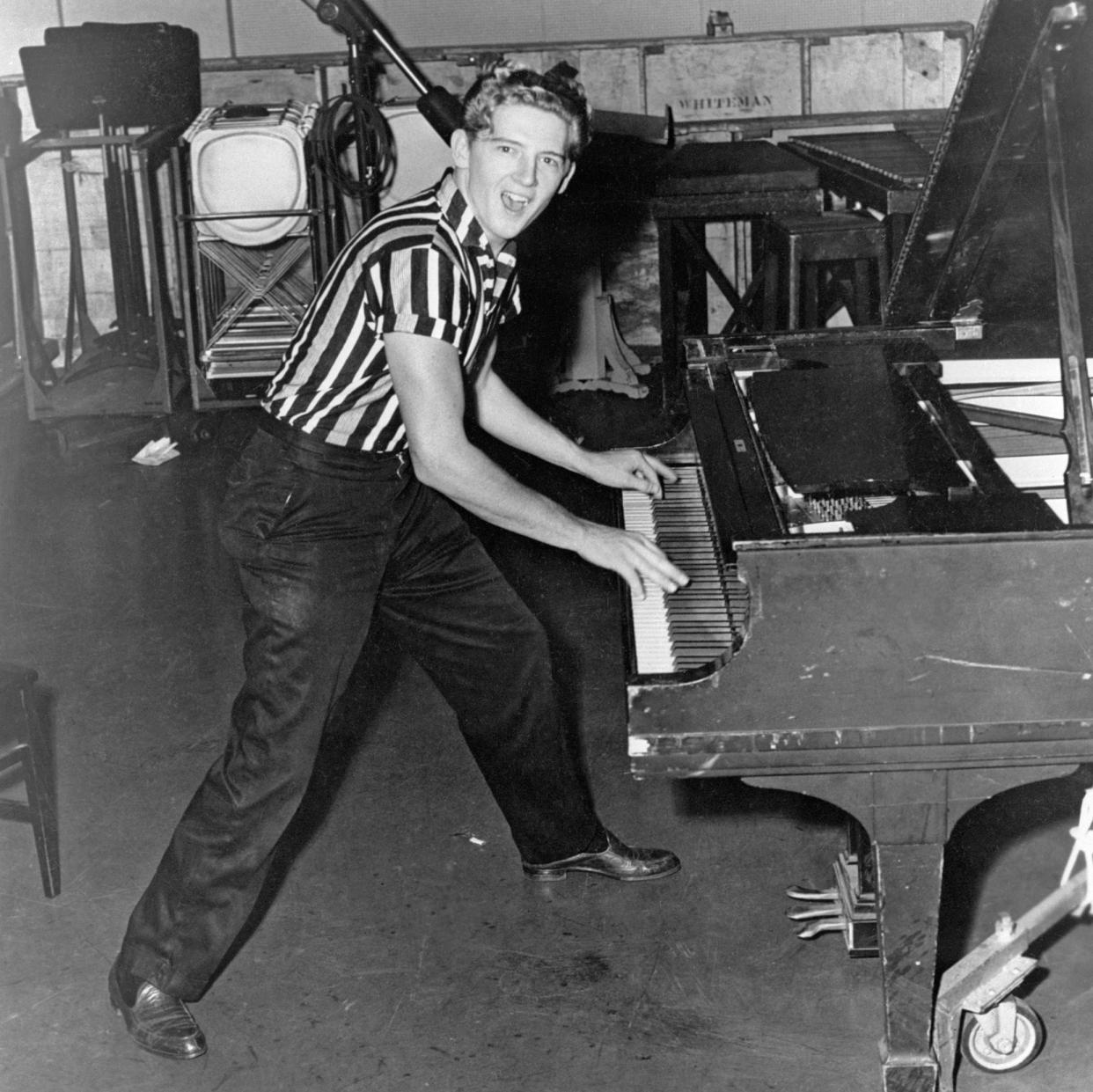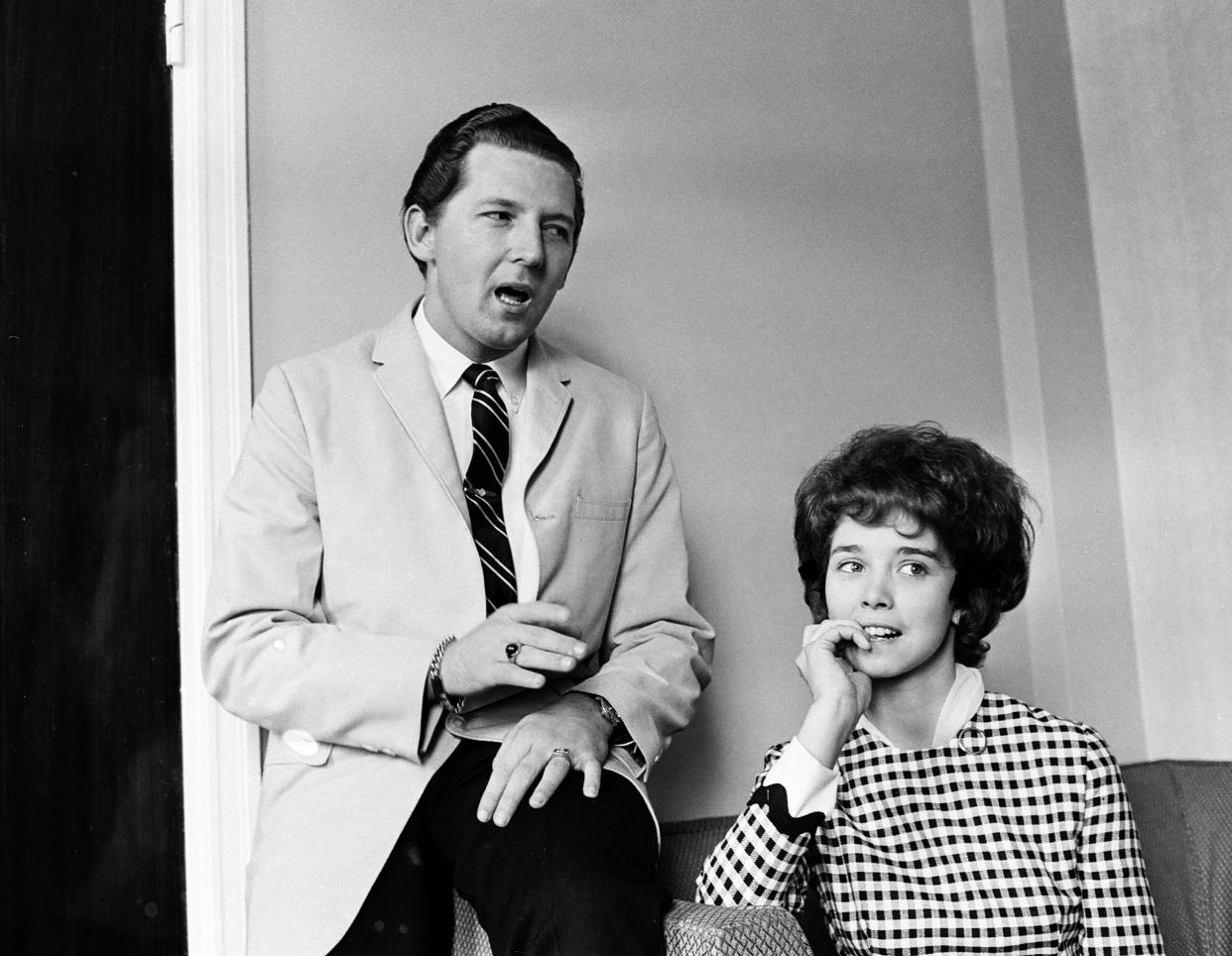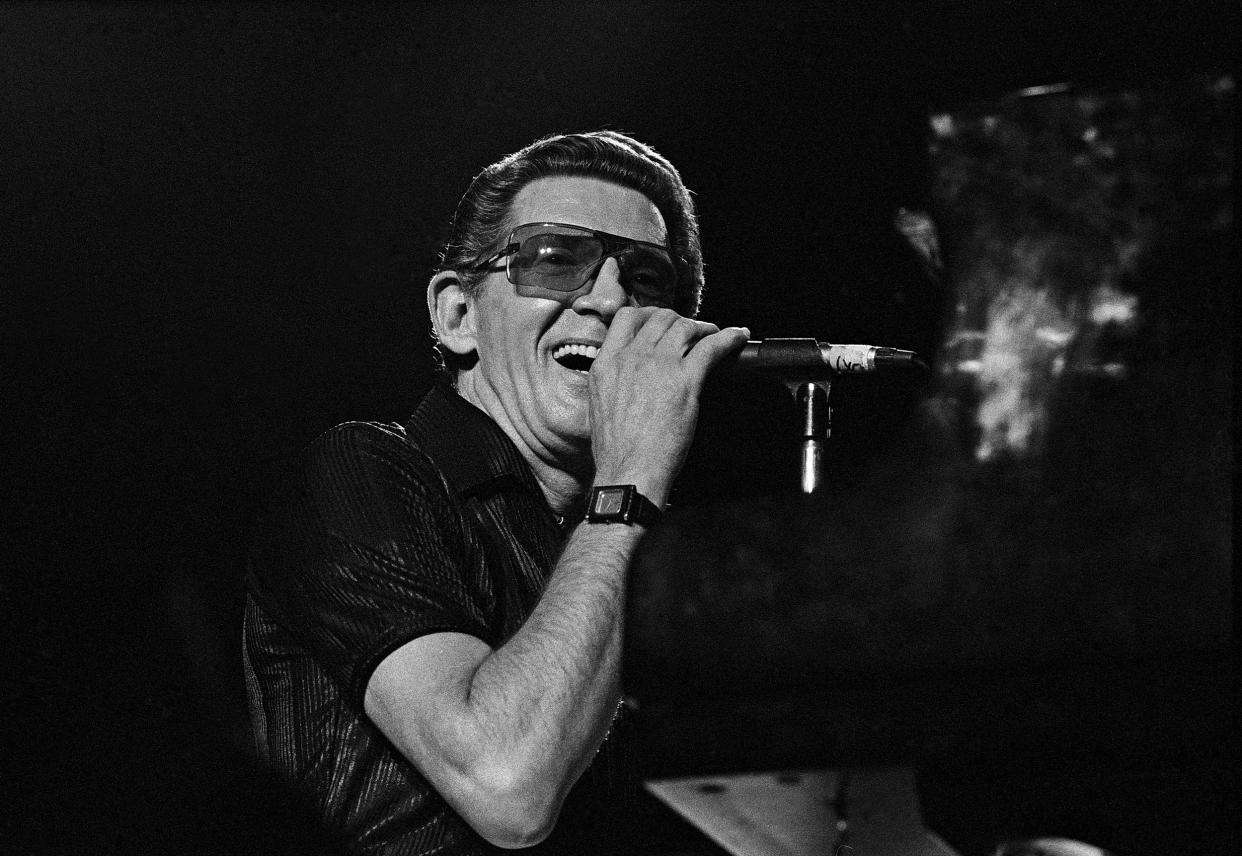Jerry Lee Lewis, free-wheeling 'wild man' of rock 'n' roll, dies at 87
Jerry Lee Lewis, the rock ’n’ roll trailblazer and piano virtuoso who electrified audiences with his raucous, free-wheeling performances but attracted scandal after he married his 13-year-old cousin, died Friday, his publicist said.
He was 87.
Lewis "suffered through the last years of his life from various illnesses and injuries that, his physicians have often said, should have taken him decades ago," according to an obituary by Rick Bragg, his biographer.
He passed away with his wife, Judith, at his side at his home in DeSoto County, Mississippi. "He told her, in his final days, that he welcomed the hereafter, and that he was not afraid," the obituary said.
Lewis was a consummate showman who gleefully blended the styles of Black rhythm-and-blues musicians, country crooners and ecstatic Pentecostal preachers. He was nicknamed “the Killer,” and his admirers believed he could be the next Elvis Presley.

In performances on stages and television screens, Lewis delighted audiences with flamboyant shenanigans. He stomped on his piano, tapped the keys with his feet and hopped around with devil-may-care verve while belting out popular songs like “Great Balls of Fire.”
“He pounded the piano with such abandon that it’s a wonder it didn’t come apart. He is a defiant, reckless, indefatigable wild man that can rock you into oblivion,” the Rock & Roll Hall of Fame said when he was inducted in 1986.
But his personal life came under intense scrutiny in the late 1950s, essentially derailing his rock career. In the middle of a 1958 tour of England, the press learned that he had married his 13-year-old cousin, Myra Gale Brown, who was also the daughter of his bass player. She later accused him of wide-ranging abuse.
The marriage drew fierce condemnation on both sides of the pond, leading to boycotts of his music and clipping his high-flying ambitions. He continued to record tracks and perform, but the scandal cast a shadow over the rest of his public life.

Lewis was born Sept. 29, 1935, in Ferriday, Louisiana, into an impoverished household. He started playing the piano at 9, and his father — a carpenter and bootlegger — was said to have mortgaged their house to buy a piano.
The young Lewis mimicked the artistic styles and public personas of a local preacher and Black musicians he saw playing at local venues. He was soon a performer in his own right, honing his craft at school assemblies and talent shows.
“When I sit down, I do feel like I’m preaching through the piano, like a sermon,” he recalled in a 2014 interview with The Wall Street Journal. “It’s a God-given talent, and it’s got to come out. I know I’ve touched a lot of lives that way. It’s just the church coming through the music.”
Inspired by the success of Elvis, Lewis eventually landed at the Sun Records label in Memphis, Tennessee. He pumped out a series of rockabilly hits for Sun, including “Whole Lotta Shakin’ Goin’ On,” “Great Balls of Fire” and “Breathless,” burnishing his standing in the music industry.
“You shake my nerves and you rattle my brain / Too much love drives a man insane,” Lewis memorably sang in “Great Balls of Fire,” accurately summing up the wild-eyed intensity of his musical style.
American rock was described by some Eisenhower-era detractors as “the devil’s music.” Lewis, a cousin of the televangelist Jimmy Swaggart, was born into a strict Christian household, but he appeared to revel in the libidinous indulgence of his art.
He was said to have been troubled by the contradiction.
Lewis’ potential as a rock star appeared limitless in the 1950s, and in 1958 he embarked on a 37-date tour through England. But the trip was upended after the press learned of his 1957 marriage to his underage cousin.
His marriage to his previous wife was still legally valid, too.
London newspapers ran scathing editorials, the tour was cut short, and the furor spread across the U.S. Lewis’ single “High School Confidential” failed to climb the pop charts, concert promoters refused to book him, and radio stations effectively froze him out.
“I probably would have rearranged my life a little bit different, but I never did hide anything from people,” he told The Wall Street Journal in 2014. “The newspapers in England came down heavy but they didn’t faze me, really. I just went on with my life as usual.”
He was forced to start playing obscure venues, firmly on the edges of the mainstream. He started to regain his footing in the 1960s, pivoting to the country genre and finding renewed success that stretched into the 1980s.
“His drive, his timing, his offhand vocal power, his unmistakable boogie-plus piano, and his absolute confidence in the face of the void make Jerry Lee the quintessential rock and roller,” the music critic Robert Christgau, reviewing a 1970 greatest hits album, wrote of his career.

Lewis was known for his erratic and sometimes abusive behavior. He married seven times. Myra Gale Brown, during their divorce proceedings in 1970, accused him of subjecting her to “every type of physical and mental abuse imaginable.”
He ran into various legal, financial and health issues over the decades. He was prosecuted on tax evasion charges and found not guilty in 1984.
“I knew I wasn’t guilty, but then again, you never know what’s going to happen,” he told reporters at the time, according to an article in The New York Times. “I actually felt the power of God.”
Hollywood helped restore interest in Lewis with a 1989 biopic, adapted from Brown’s memoir about their 13-year marriage, titled “Great Balls of Fire!” Dennis Quaid starred as Lewis, with Winona Ryder as Brown and Alec Baldwin as Swaggart.
Lewis recorded albums only intermittently in recent decades. He earned largely positive reviews for “Last Man Standing” (2006), anchored by duets with big-name artists like Bruce Springsteen, Mick Jagger and The Band’s Robbie Robertson.
His last album, “Rock & Roll Time,” released in 2014, reached No. 33 on the Billboard rock charts and No. 27 on the U.S. country charts. He received a Lifetime Achievement Award at the 48th Grammy Awards in 2005.
Mourners planned to place flowers on his star on the Walk of Fame in Hollywood on Friday afternoon.
